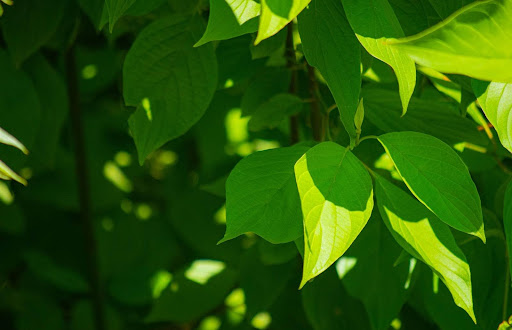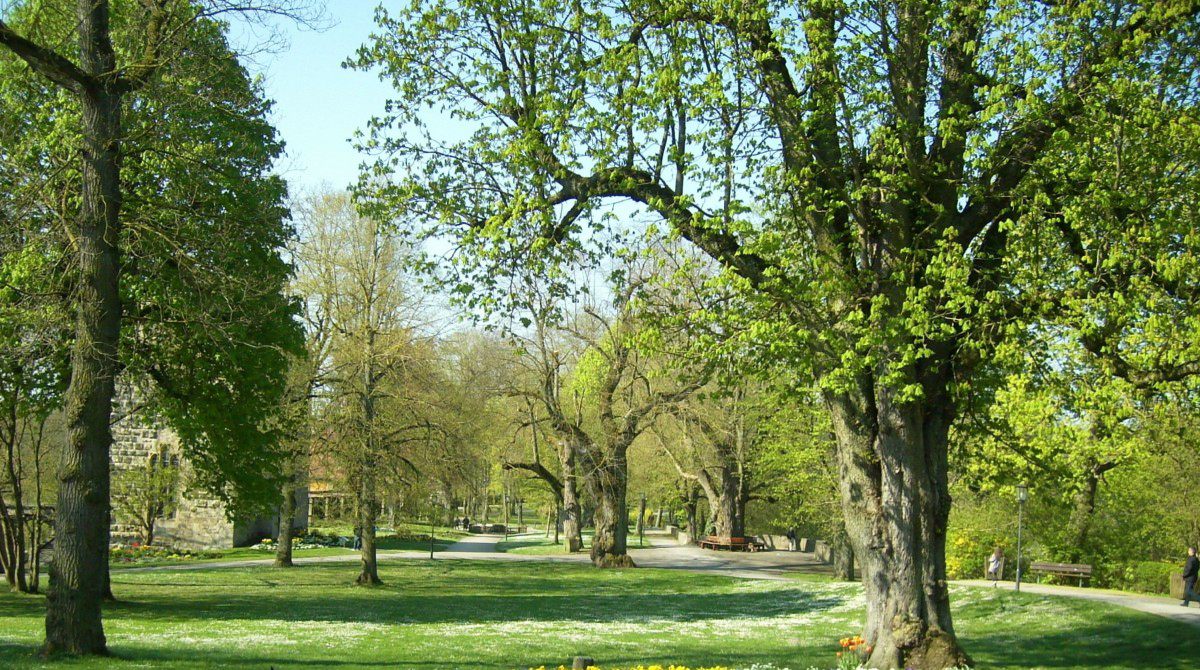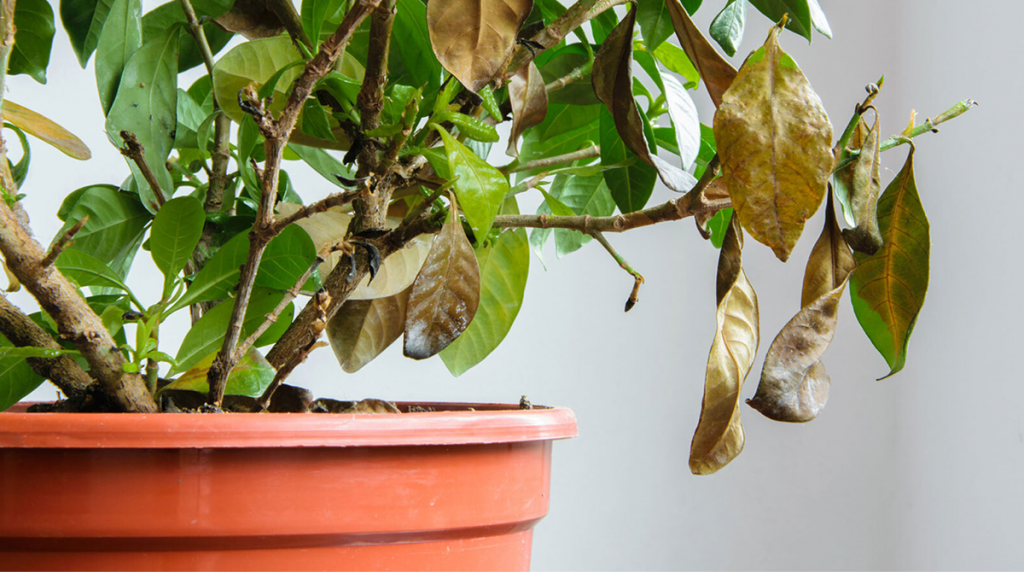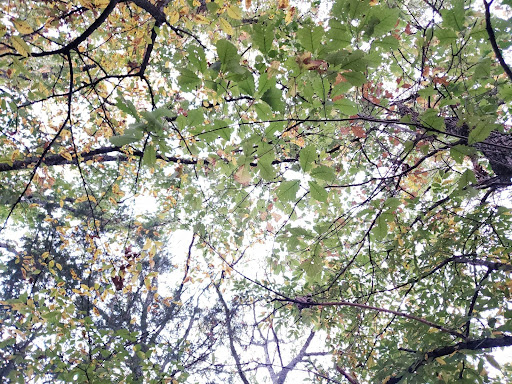
Date July 22, 2025
Category
Beneath the soil of every thriving forest lies an intricate network of fungal threads silently working to support the towering trees above. These microscopic fungi, known as mycorrhizae, form symbiotic relationships with tree roots that fundamentally alter how trees access nutrients, water, and even communicate with one another. While invisible to the casual observer, mycorrhizal fungi contribute to as much as 40% of a tree’s nutrient uptake in many ecosystems. For property owners and tree enthusiasts alike, understanding these powerful underground allies can dramatically change how we approach tree care and landscape management. In this comprehensive guide, we’ll explore how mycorrhizal fungi operate, why they’re critical for optimal tree health, and practical ways to harness their benefits for your trees. Whether you’re dealing with newly planted specimens or managing established trees, mycorrhizal relationships represent one of nature’s most effective support systems for long-term tree vitality.
What Are Mycorrhizal Fungi?
Mycorrhizal fungi represent one of nature’s most successful evolutionary partnerships. The term “mycorrhiza” literally means “fungus-root” and describes the symbiotic relationship between specialized fungi and plant roots. These fungi penetrate the root cells of trees or form sheaths around the roots, creating an extended network that effectively increases the root surface area by hundreds or even thousands of times.
Two primary types of mycorrhizal relationships affect trees. Ectomycorrhizal fungi form sheaths around tree roots without penetrating the cells, creating a vast external network that extends into the surrounding soil. These typically associate with conifers and hardwoods like oak, beech, and pine. Endomycorrhizal fungi (also called arbuscular mycorrhizal fungi) actually penetrate the root cells of their host trees, forming specialized structures inside the roots themselves. These commonly associate with maples, dogwoods, and many fruit trees.
The relationship between trees and these fungi developed over 400 million years ago and has been critical to the evolution and spread of forests across our planet. According to research published in 2019, approximately 90% of land plants form some type of mycorrhizal relationship, highlighting just how fundamental these partnerships are to plant life on Earth.
For trees specifically, these fungi serve as an extension of their root systems, dramatically increasing their ability to absorb water and nutrients while providing protection against soil pathogens and environmental stresses.
The Symbiotic Exchange: How Trees and Fungi Benefit Each Other
The relationship between mycorrhizal fungi and trees represents a true win-win scenario in nature. In this elegant exchange, both organisms receive significant benefits that enhance their survival and growth.
Trees provide the fungi with carbohydrates produced through photosynthesis – research indicates trees may allocate between 10-30% of their photosynthetically fixed carbon to their fungal partners. This steady supply of sugars fuels the fungi’s growth and metabolism, allowing them to extend their hyphal networks through the soil.
In return, the fungi deliver a remarkable range of services to their tree hosts:
- Enhanced nutrient acquisition, particularly phosphorus and nitrogen which are often limiting factors in tree growth
- Improved water absorption and drought tolerance through their extensive hyphal networks
- Protection against soil-borne pathogens through physical barriers and chemical defenses
Perhaps most fascinating is how this partnership enhances a tree’s resilience during environmental stress. Studies from 2020 demonstrate that trees with robust mycorrhizal networks recover more quickly from drought conditions and show greater resistance to certain diseases like Fusarium and Verticillium wilts.
The fungi essentially function as both miners and delivery systems, accessing nutrient sources that would be unavailable to tree roots alone. They can extract tightly bound phosphorus from soil particles and even break down organic matter to access nitrogen. This nutrient-gathering capability becomes especially valuable in poor or disturbed soils where trees might otherwise struggle to thrive.
The exchange represents a sophisticated trading system that has evolved over millions of years, with both partners adjusting their contributions based on environmental conditions and their respective needs.
The Wood Wide Web: How Mycorrhizal Networks Connect Forest Communities
One of the most revolutionary discoveries in forest ecology over the past decades has been the recognition that mycorrhizal fungi don’t just connect individual trees to soil resources – they connect trees to each other, creating what scientists now call the “Wood Wide Web.” This vast underground network functions as a communication and resource-sharing system throughout entire forest ecosystems.
Through these mycorrhizal networks, trees can transfer carbon, nutrients, and water to one another. Research published in 2016 revealed that older, larger “hub trees” (sometimes called “mother trees”) can recognize their own seedlings and preferentially send them resources through these fungal connections, improving their offspring’s chances of survival by up to 70%.
Even more remarkably, these networks transmit warning signals. When one tree is attacked by insects or pathogens, it can release chemical signals that travel through the mycorrhizal network to neighboring trees. These neighbors then preemptively increase their defensive compounds before they’re attacked themselves – essentially receiving advance warning of incoming threats.
This interconnectedness challenges our perception of trees as strictly individual organisms. Instead, forests function more like superorganisms with trees supporting each other during times of stress. For instance, during severe drought, healthier trees have been documented sharing water with struggling neighbors through mycorrhizal connections, demonstrating a form of natural resource redistribution.
For homeowners with multiple trees on their property, understanding this connectivity highlights the importance of maintaining soil health across the entire landscape, not just around individual specimens. At TreeNewal, we recognize that supporting these underground networks can enhance the collective health of all trees in your landscape.
The Impact of Mycorrhizal Fungi on Tree Health and Growth
The practical benefits of strong mycorrhizal associations for trees are substantial and measurable. Trees with well-established fungal partners consistently demonstrate superior performance across multiple metrics of health and vitality.
Research studies comparing trees with and without mycorrhizal associations show dramatic differences in growth rates. Young trees inoculated with appropriate mycorrhizal fungi can establish up to 30-50% faster than non-inoculated trees in the first few years after planting. This accelerated establishment period is critical for long-term tree success, particularly in challenging urban or suburban environments.
Nutrient uptake efficiency increases dramatically with mycorrhizal assistance. For example, phosphorus acquisition can improve by 100-1000% in mycorrhizal trees compared to those lacking these fungal partners. This enhanced nutrition leads to more vibrant foliage, better flowering and fruiting, and improved overall tree vigor.
Water relations are similarly transformed. During drought conditions, mycorrhizal trees access water from a much larger soil volume through the extensive fungal network. A 2018 study demonstrated that trees with robust mycorrhizal associations required up to 40% less irrigation to maintain healthy growth compared to trees without these relationships.
Disease resistance represents another crucial benefit. The mycorrhizal network creates both physical and biochemical barriers against soil-borne pathogens. Certain mycorrhizal fungi produce antibiotics that suppress harmful organisms in the rhizosphere, while others simply outcompete potential pathogens for space and resources around the roots.
For trees facing urban stresses like soil compaction, heat islands, and pollutants, mycorrhizal partnerships can mean the difference between merely surviving and genuinely thriving. This is particularly important for sensitive species like post oaks and jack oaks that may struggle in disturbed environments.
How Modern Practices Affect Mycorrhizal Networks
Despite their importance, many common landscape and agricultural practices inadvertently damage or destroy mycorrhizal networks. Understanding these impacts is the first step toward more fungal-friendly management approaches.
Tillage and soil disturbance physically shred the delicate hyphal networks that can take years to fully establish. Even minor disruptions like annual rototilling for gardens can significantly reduce mycorrhizal activity in the surrounding soil. Construction activities that compact soil or remove topsoil are particularly devastating to these networks.
Chemical inputs often negatively impact mycorrhizal communities. High-phosphorus fertilizers reduce the tree’s need for mycorrhizal partnerships, causing these relationships to weaken over time. Many fungicides applied for disease control don’t discriminate between harmful fungi and beneficial mycorrhizae, potentially eliminating both simultaneously.
Modern tree care practices can sometimes work against mycorrhizal health. Excessive mulch, landscape fabric that limits organic matter incorporation, and over-sanitized landscapes with minimal leaf litter all reduce the habitat quality for mycorrhizal fungi.
Urban development typically results in fragmented patches of trees separated by impervious surfaces that prevent mycorrhizal networks from connecting across the landscape. This isolation reduces resilience and resource sharing that would naturally occur in more connected ecosystems.
Climate change presents additional challenges. Altered precipitation patterns and temperature regimes can stress both trees and their fungal partners. However, robust mycorrhizal networks actually provide one of the best buffers against these changing conditions by enhancing tree adaptability.
The good news is that mycorrhizal fungi show remarkable resilience when given the opportunity to recover. Studies indicate that transitioning to more fungal-friendly practices can restore much of this underground biodiversity within 3-5 years, even in previously degraded landscapes.
Practical Applications: Enhancing Mycorrhizal Relationships in Your Landscape
Incorporating mycorrhizal-friendly practices into your tree care routine doesn’t require radical changes – just thoughtful adjustments to support these crucial underground allies. Here are practical steps to nurture mycorrhizal relationships in your landscape:
For new plantings, consider mycorrhizal inoculation at installation time. Commercial inoculants containing appropriate fungal species can jumpstart these relationships, especially in disturbed soils. In a client case from 2023, we observed at TreeNewal that newly planted red oaks inoculated with ectomycorrhizal fungi established root systems approximately 40% larger than non-inoculated controls during their first growing season in North Texas.
Maintain a consistent organic mulch layer around trees, extending to at least the drip line. Use natural materials like wood chips, leaves, or compost to mimic forest floor conditions. This creates the ideal environment for mycorrhizal fungi while suppressing weeds and conserving moisture. Aim for a 2-4 inch depth, but avoid piling mulch against the trunk.
Minimize soil disturbance in the root zone. When planting under trees, choose careful hand-digging over mechanical tillage. Consider creating mulched beds under trees rather than maintaining turf grass, which competes with trees for resources and typically requires more intensive management.
Adjust fertilization practices to support mycorrhizal partnerships. Reduce high-phosphorus fertilizers, which can suppress mycorrhizal relationships. Instead, focus on slow-release organic options that feed soil biology alongside the tree. Soil tests can help determine if any nutrients are genuinely deficient before applying amendments.
Rethink chemical applications around trees. Many fungicides, herbicides, and insecticides can negatively impact beneficial soil organisms. Adopt integrated pest management approaches that minimize chemical inputs and target specific problems rather than applying broad-spectrum products preventively.
One client in Southlake converted the area beneath their heritage oaks from turf grass to a native plant community with a natural mulch layer. After three years, soil samples revealed a 300% increase in mycorrhizal colonization rates, coinciding with visible improvements in tree vigor and drought resilience.
Understanding Mycorrhizal Benefits Through Tree Hormone Systems
The remarkable benefits of mycorrhizal fungi are deeply interconnected with tree hormone systems. These chemical signaling molecules regulate virtually every aspect of tree growth and development, and mycorrhizal relationships significantly influence their production and distribution.
When mycorrhizal fungi colonize tree roots, they trigger changes in the plant’s hormone production. Research from 2021 shows that colonized roots produce different levels of auxins, cytokinins, and other growth regulators compared to non-mycorrhizal roots. These hormonal shifts directly impact root architecture, branching patterns, and even leaf development.
Cytokinin production in particular increases with mycorrhizal colonization, promoting cell division and delaying senescence in leaves. This helps explain why trees with strong mycorrhizal partnerships often maintain healthier foliage longer into the growing season and show delayed autumn color changes compared to trees lacking these relationships.
Stress hormones like abscisic acid (ABA) also interface with mycorrhizal networks. During drought conditions, mycorrhizal fungi can influence ABA production in ways that help trees respond more efficiently to water stress. This includes triggering faster stomatal closure to reduce water loss while simultaneously enhancing water uptake through the expanded fungal network.
Even defensive hormones like jasmonic acid and salicylic acid – critical for pest and disease resistance – show altered patterns in mycorrhizal trees. The fungi appear to prime these defense systems, allowing trees to respond more rapidly to threats. This hormonal priming helps explain the enhanced disease resistance observed in trees with robust mycorrhizal associations.
Understanding this hormonal interplay helps tree care professionals develop more holistic approaches to tree health. Rather than attempting to address individual symptoms, supporting the mycorrhizal-tree relationship creates cascading benefits throughout the tree’s physiological systems.
How long does it take for mycorrhizal fungi to establish after inoculation?
Colonization can begin within days, but meaningful establishment takes 3–6 months, with noticeable tree benefits within the first growing season. Full network development may take 1–2 years or more, especially in landscape settings.
Do all tree species form relationships with the same types of mycorrhizal fungi?
No, tree species pair with specific mycorrhizal types—conifers and oaks often form ectomycorrhizal relationships, while maples and fruit trees typically form endomycorrhizal ones. Choose inoculants that match your tree species for best results.
Can chemical fertilizers harm mycorrhizal fungi?
Yes, especially high-phosphorus and synthetic nitrogen fertilizers, which reduce a tree’s reliance on fungi and can disrupt beneficial relationships. Organic, low-phosphorus options are generally safer for maintaining mycorrhizal health.
Will adding mycorrhizal fungi help save a declining tree?
It may help if the decline is due to soil issues, root damage, or nutrient deficiencies, but not if caused by disease, trunk damage, or pests. A certified arborist can determine if fungi should be part of a larger recovery plan.
Are commercial mycorrhizal inoculants effective, or will fungi naturally colonize tree roots?
Commercial inoculants are often effective in disturbed soils lacking native fungi. In undisturbed areas, natural colonization may occur, but inoculation can improve tree survival and growth where native populations are depleted.
Fostering a Fungal Future for Thriving Trees
The world beneath our feet, teeming with mycorrhizal fungi, profoundly influences the health and resilience of the trees we cherish. Far from being isolated entities, trees are deeply intertwined with these microscopic partners, forming a sophisticated, subterranean support system that provides vital nutrients, water, and even a “Wood Wide Web” for communication and resource sharing. From enhancing nutrient uptake and drought tolerance to bolstering disease resistance and accelerating establishment, the benefits of robust mycorrhizal networks are undeniable.
While modern landscape practices can inadvertently disrupt these crucial partnerships, the good news is that fostering a fungal-friendly environment is often simpler than one might imagine. By embracing practices like targeted inoculation for new plantings, maintaining a healthy organic mulch layer, minimizing soil disturbance, and adopting thoughtful fertilization and pest management strategies, we can actively support these essential underground allies. Recognizing the intricate interplay between mycorrhizal fungi and tree hormone systems further illuminates the holistic advantages of nurturing these relationships. Ultimately, understanding and respecting the profound role of mycorrhizal fungi empowers us to cultivate not just individual trees, but vibrant, interconnected ecosystems that are better equipped to thrive for generations to come.
About us
At TreeNewal, we combine the science of arboriculture with a passion for preserving the health and beauty of North Texas trees. As ISA Certified Arborists, our team brings years of expertise in diagnosing, treating, and managing trees in both residential and commercial landscapes. From soil aeration and disease management to emergency tree services and long-term preservation plans, we use environmentally responsible practices to promote sustainable tree growth and structural safety. Our goal is to help trees thrive in challenging urban environments while protecting the value and aesthetics of your property.
Need expert care for your trees? Contact TreeNewal today to schedule a consultation with a certified arborist.


